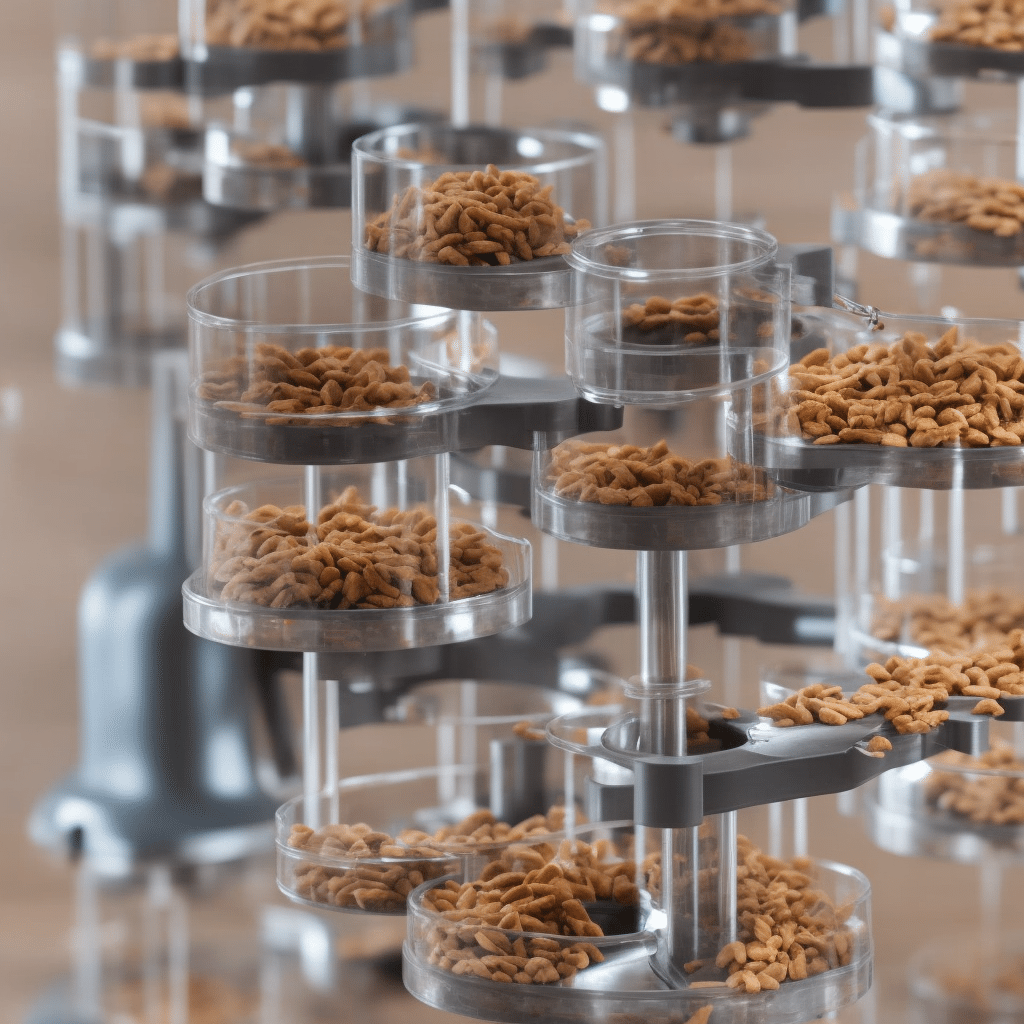How to Choose the Right Interactive Feeders to Stimulate Your Pet’s Mind?

Whether you’re a proud cat parent or a dedicated dog lover, your pet’s mental health is as vital as their physical well-being. Like humans, animals also require mental stimulation to keep them alert, engaged, and happy. In recent years, interactive feeders have emerged as a popular tool for pet owners, offering a fun, challenging way for pets to get their daily meals. But with so many options in the market, how can you make sure you choose the right interactive feeder for your pet?
The Importance of Mental Stimulation for Pets
Your pet’s mental stimulation is more than just a way to keep them entertained, it’s a crucial aspect of their overall well-being. A bored or unstimulated pet can quickly become a stressed, destructive, or even aggressive pet. Such behavior not only distresses the pet but also impacts your home environment adversely.
A voir aussi : What Are the Best Practices for Introducing Your Pet to a New Baby’s Room?
Interactive feeders have become a staple in many households because they offer mental stimulation during meal times. These feeders turn a mundane feeding routine into a fun, problem-solving activity. The pet has to figure out how to get to their food, which is both a mental and physical challenge.
Without adequate mental stimulation, pets can become stressed, anxious, or depressed. They may exhibit destructive behaviors, such as chewing on furniture or digging up your garden. They could also engage in excessive self-grooming, which can lead to skin problems and hair loss. By providing your pet with an interactive feeder, you can help prevent these issues and promote a healthier, happier pet.
A découvrir également : What Are the Best Pet Identification Methods to Ensure Your Pet’s Safety?
Understanding Your Pet’s Needs
Before you start shopping for an interactive feeder, it’s important to understand your pet’s individual needs and behaviors. This will help you choose a feeder that is not only enjoyable for your pet but also safe and appropriate.
Firstly, consider your pet’s age and physical abilities. Younger pets may require more challenging feeders, whereas older pets might need simpler ones. Similarly, a larger dog will need a feeder that can withstand rough handling, while a small cat might be intimidated by a feeder that’s too big or complex.
Next, observe your pet’s eating habits. Do they tend to wolf down their food, or are they slow and methodical eaters? Interactive feeders can help fast eaters slow down, which can prevent digestive issues like bloating or choking. For slow eaters, a feeder that makes them work a bit harder for their food can provide much-needed stimulation.
Lastly, think about your pet’s personality. Are they curious and love to solve problems, or do they prefer simpler, less challenging activities? Understanding your pet’s preferences will help you choose a feeder they’ll enjoy using.
Types of Interactive Feeders
Interactive feeders come in a wide variety of shapes, sizes, and levels of complexity. Knowing the different types can help you choose the right one for your pet.
Treat-dispensing balls or cubes are a common type of interactive feeder. These toys are filled with treats or dry food, and as your pet plays with the toy, the food is slowly dispensed. These are great for pets who need to slow down their eating and for those who enjoy chasing or batting toys around.
Puzzle feeders are another popular choice. These feeders require your pet to solve a puzzle to access their food, providing a significant mental challenge. They can be a great choice for intelligent, problem-solving pets.
Slow feeders are designed for pets who gobble down their food too quickly. These feeders have ridges or compartments that slow down eating and make mealtime last longer. They can also make mealtime more exciting, as your pet has to work to get to every piece of food.
If your pet enjoys hunting or foraging, consider a scatter feeder. These feeders randomly distribute food or treats around a room or outdoor area, encouraging your pet to use their natural hunting skills.
Considering Safety and Durability
Safety should always be a top priority when choosing an interactive feeder. Make sure the feeder is made from non-toxic materials and does not have any small parts that your pet could swallow. Check that the feeder is sturdy and can withstand your pet’s chewing or batting without breaking.
Durability is another key consideration. A good interactive feeder should be able to withstand daily use without breaking or wearing out quickly. Look for feeders made from durable materials like heavy-duty plastic or stainless steel.
Remember, the right interactive feeder can greatly improve your pet’s quality of life. By considering your pet’s individual needs and behaviors, understanding the different types of feeders available, and prioritizing safety and durability, you can find the perfect feeder to keep your pet mentally stimulated and happy.
Incorporating Training and Playtime with Interactive Feeders
Engaging your pet in regular exercise and training is essential for their overall well-being. Integrating interactive feeders into these routines can offer additional mental and physical stimulation, enhancing their health and happiness.
Exercise and playtime play a crucial role in your pet’s life. They help in shedding excess weight, maintaining muscle tone, and promoting good heart health. They also serve as an excellent outlet for your pet’s energy, curbing destructive behaviors caused by boredom or anxiety. Puzzle feeders, such as those from Nina Ottosson or Outward Hound, can be a great choice for these sessions. These feeders challenge your pet to solve a puzzle to access their food, providing both mental and physical stimulation.
Suppose you have a dog, an interactive dog toy which doubles as a feeder like a treat-dispensing ball can be an excellent tool for playtime. You can fill the ball with dry food or treats, and as your dog plays and rolls the ball around, the food is slowly dispensed. This not only keeps your dog engaged but also slows down their eating, helping to prevent issues like bloating.
If you’re a cat owner, consider an interactive cat toy like a snuffle mat. These mats are designed to mimic the grass, and you can hide dry food or treats within the fabric. Your cat will need to use their natural hunting instincts to find and retrieve the treats, offering both physical and mental stimulation.
Remember, combining interactive feeders with regular exercise and training can greatly enhance your pet’s quality of life. Just be sure to choose a feeder that matches your pet’s needs, preferences, and abilities.
Final Thoughts: The Benefits of Interactive Feeders
In conclusion, interactive feeders are a valuable tool for pet owners. They offer a unique way to feed your pet, turning mealtime into a fun, stimulating activity that can improve your pet’s mental and physical health.
The benefits of interactive feeders extend beyond just mental stimulation. They can encourage slower eating habits, reducing the risk of digestive issues like bloating or choking. They can provide an outlet for excess energy, helping to curb destructive behaviors. And they can make mealtimes more engaging, improving your pet’s overall quality of life.
Whether you opt for a puzzle feeder, a slow feeder, or a treat-dispensing toy, the key is to choose an interactive feeder that meets your pet’s individual needs and abilities. Consider factors like your pet’s age, physical abilities, eating habits, and personality. Also, ensure the feeder is safe, durable, and made from non-toxic materials.
Remember, a mentally stimulated pet is a happy pet. By incorporating interactive feeders into your pet’s routine, you can help ensure they stay healthy, active, and engaged. Whether you own a dog or a cat, there is an interactive feeder out there that will be perfect for your furry friend.
